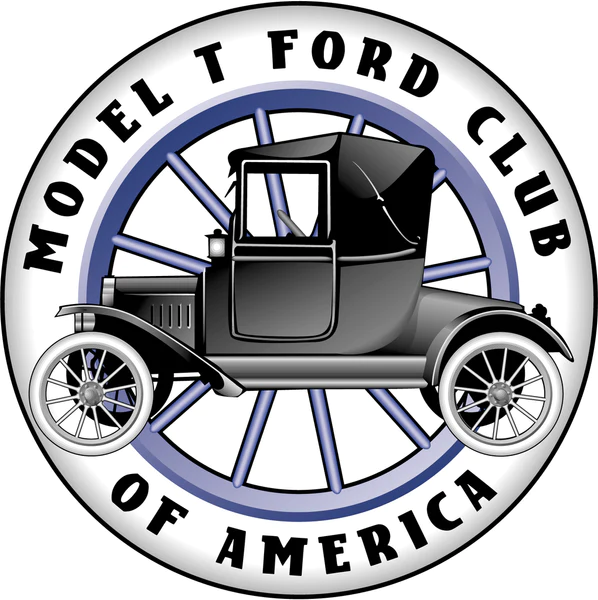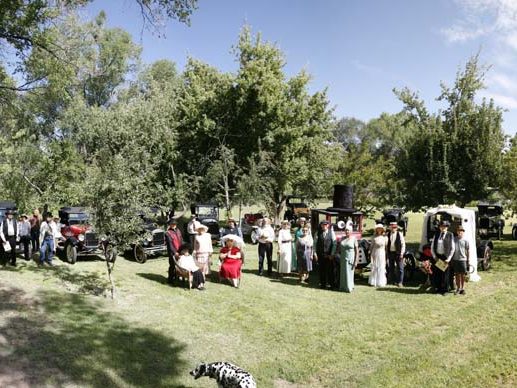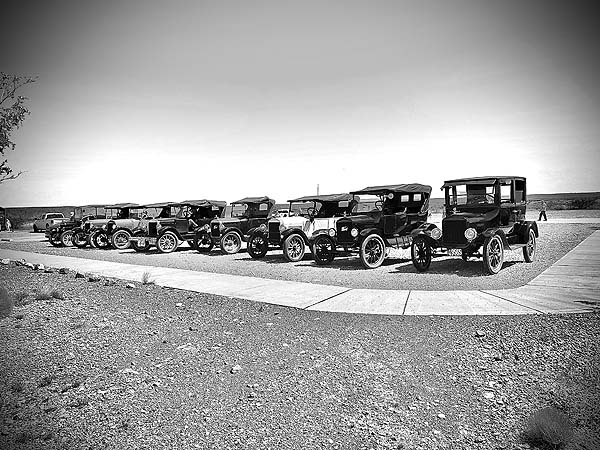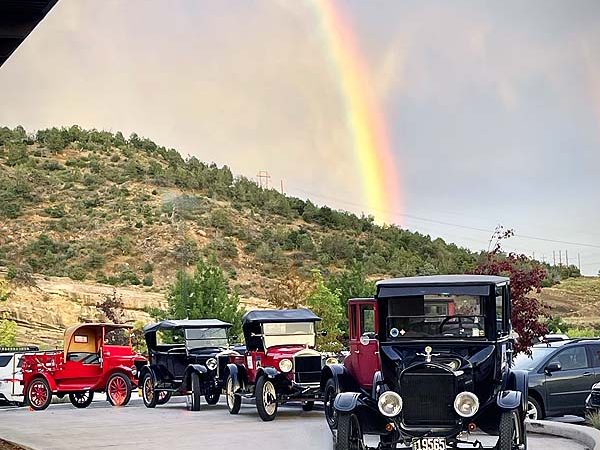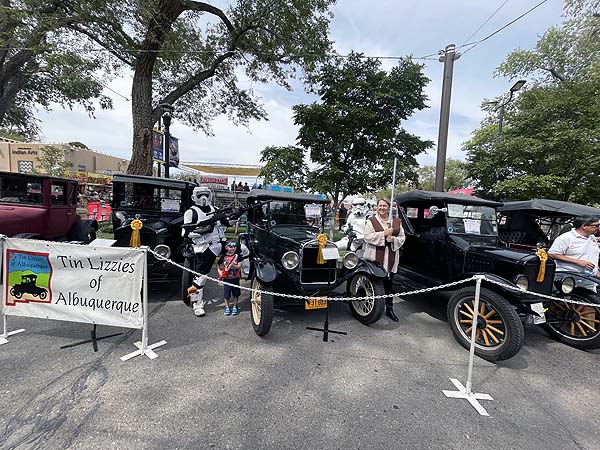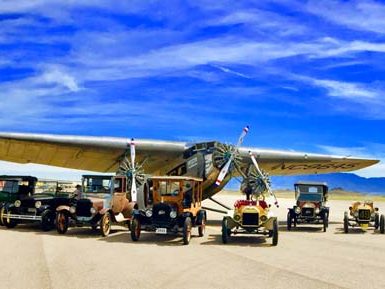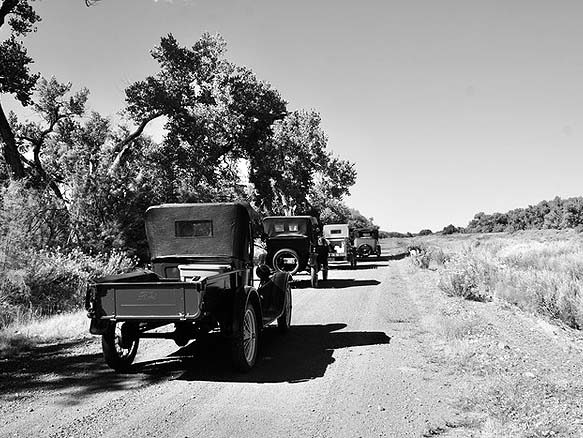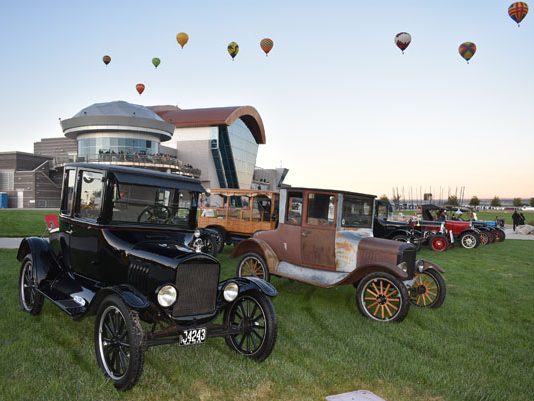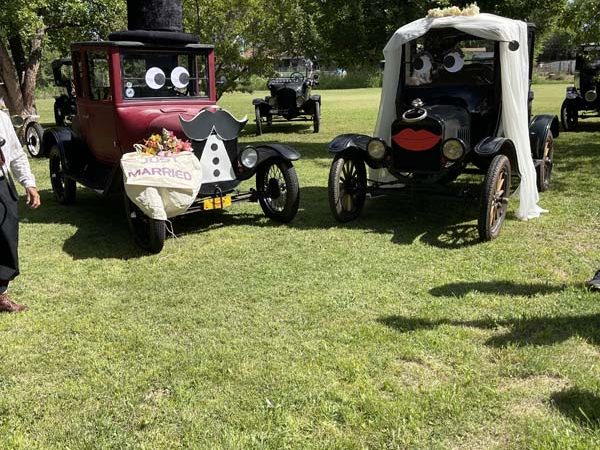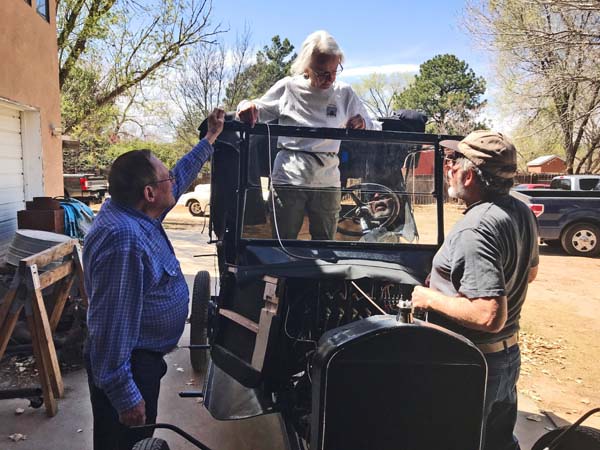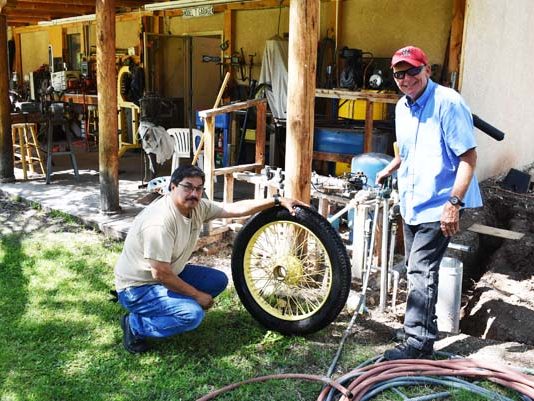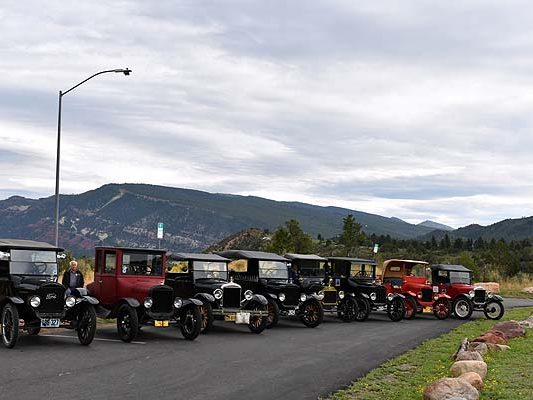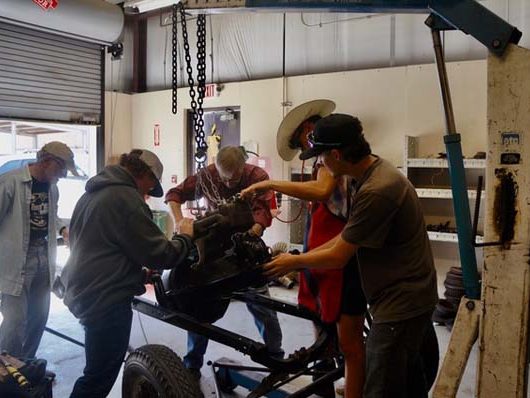Installing LED Headlight Bulbs in a Model T
By Don Mitchell
This article describes a procedure for replacing your Model T incandescent headlight bulbs with light emitting diode (LED) bulbs. The process involves purchasing LED bulbs and then installing them on your car. The bulbs are not expensive and they are easy to install so the Model T headlights can be converted to LEDs fairly quickly and inexpensively.
You first need to order the bulbs. After a good bit of research, I found 6 volt LEDs on the Amazon website ( https://www.amazon.com/gp/product/B07253LFHF/ref=0h aui detailpage o01 s00?ie=UTF8&psc=1). (If you copy this address and paste it in your browser you can then go to the Amazon website and find the bulbs or ones that are similar.) If you select the BA15D size, the bulbs will have double contacts on the end and pins on the base which are opposite one another so they will work in the Model T headlight socket. Some bulbs have offset pins which can be installed in the socket if you file down the contact which does not mate with the socket. Twelve volt LED bulbs can also be purchased from Auto Zone. I think those have pins which are offset so one of them would have to be filed down.
Once you have the bulbs (or ahead of time if you want to be ready to install them when they arrive!), you need to start the process of removing the incandescent bulbs and replacing them with LEDs. Start by removing the headlight rims. This involves pushing in on the rims and then twisting them counterclockwise to remove them from the headlight buckets. After the rims are removed, the Model T bulbs can be removed from their sockets.
Next, you need to decide which headlight switch position you want to use to turn on the LED bulbs. Unlike the high and low beam incandescent bulbs, the LED bulbs have a single beam so they will only come on when the headlight switch is in the chosen position. With the headlight switch off, disconnect the connector at the back of each headlight. Unscrew the collar on the connector. This will expose two small screws on either side. Now turn the headlight switch to the selected position and use a voltmeter (or the incandescent bulb) to determine which of the two connector screws is the hot one. Once you’ve found this wire, mark it so you will know how to set up the wiring for the LED bulb. Turn the headlight switch off, unscrew the screw on the other side of the connector, and then pull the wire out of the connector. This wire will need to be cut off so that it is not grounded. Otherwise it could cause a short if it is grounded when the headlight switch is in the opposite (non LED light) position.
The last step in the installation is to connect a ground wire to the headlight socket. Cut two pieces of wire (I used 16 gauge) about five inches long and strip the ends. If you tin one of the ends with solder it will fit into the headlight connector a little easier. Run the wire through the threaded collar and push it into the hole in the back of connector where you removed the wire earlier. Tighten the screw to hold the wire in place and then thread the collar back onto the connector. You can then reattach the connector to the back of the headlight socket. The other end of the wire needs to be connected to a ground on the car. Bill Hansen used the focusing screw on the back of the headlight. He crimped a spade terminal on the end of the wire and then put it under the focusing screw so it was grounded to the headlight. Another option, which I used, is to remove the focusing screw and then put it through a ring terminal which is crimped to the end of the ground wire.
After connecting the ground wires, install the LED bulbs in the headlight sockets. You can then, hopefully, watch the bright LEDs light up when you turn on the headlight switch to the
correct position. One of three things may happen. Both headlights may come on, only one will come on, or none will light. If both bulbs don’t light, don’t panic. If only one or none come on, it’s because the bulbs are not in the socket in the correct position. For the bulbs that don’t come on, remove them and rotate them a half turn and put them back in the socket. This should solve the problem. The rotation is necessary because the LED bulbs have a polarity. If the two contacts on the bottom of the lED were reversed when you installed them (the hot wire to the ground contact and the positive contact grounded), the hot wire in the headlight connector couldn’t allow current to flow into the LED and out through the ground wire. Rotating the LED and reinserting it corrects this problem.
Once you have the lights working, reinstall the headlight rims and take the car for a spin at night to see how much better it is to drive with bright headlights.
If you have any problems call me (822-1439), Bill Hansen, or Larry. Bill and Larry were the ones who figured out that one of the contacts on the bottom of the LEDs was hot (positive) and the other was ground (negative). This was the key to knowing how to wire the LED bulbs so they would work in our Model Ts. Several club members have installed LED bulbs by talking to those who already have. If you join us, I think you will pleased with the results.
